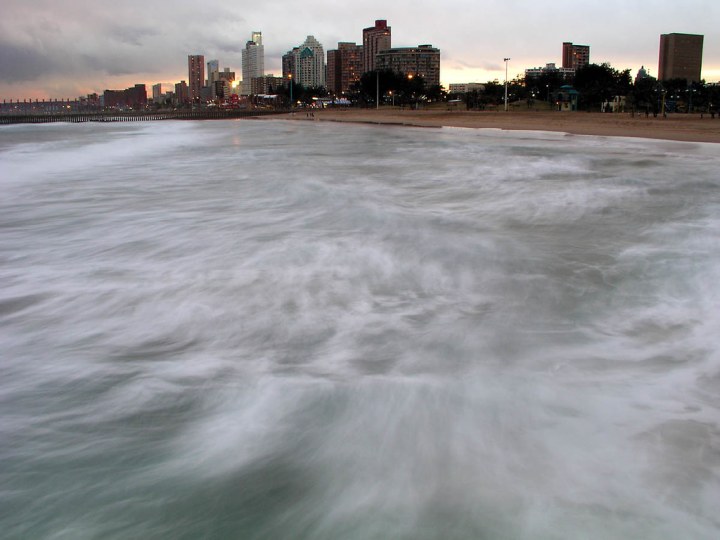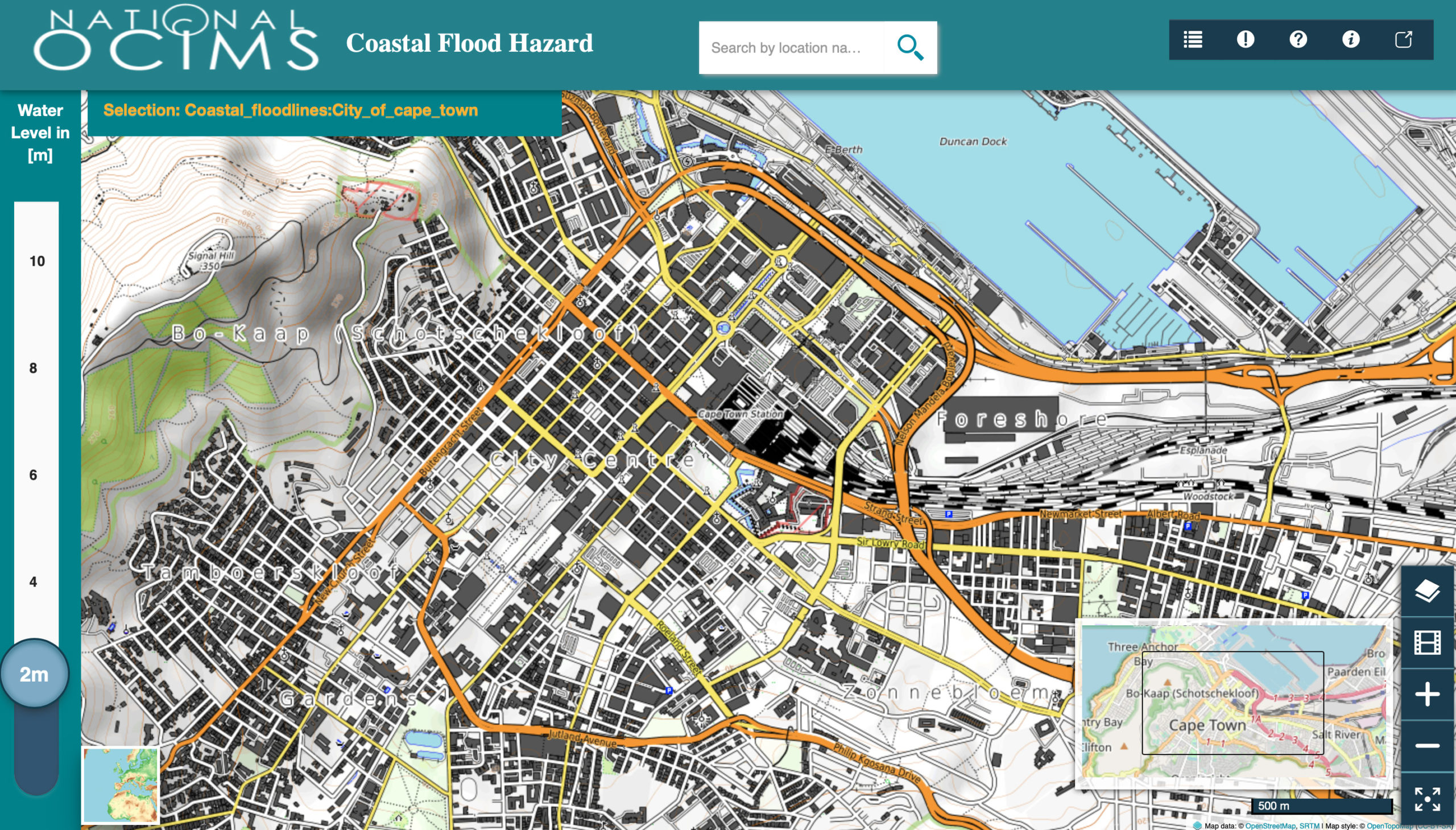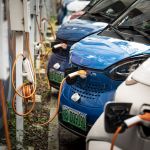CLIMATE CRISIS
How rising sea-levels may impact Durban and Cape Town

Sea-level rise is not a major threat in South Africa but, tied with other climate crisis consequences, it can become one. Here’s how higher sea levels could affect the country’s coastal cities.
With the world heating up, countries are expected to make ambitious efforts to keep global temperature rise below 1.50C at the upcoming COP26 negotiations. Africa, one of the most vulnerable regions to the climate crisis, is likely to get hotter at twice the global rate, with sea-level rise a consequence.
For a long time, global warming was almost solely a phenomenon associated with melting glaciers. Alongside this notion were images of polar bears stranded on cracked-off pieces of ice — and land expected to almost disappear as it was swallowed by sea-level rise.
For South Africa, sea-level rise is “not a terrible threat”, according to Dr Melanie Lück-Vogel, a senior researcher with the coastal systems research group at the Council for Scientific and Industrial Research (CSIR). This is due to South African coastal shelves being quite steep, with the exception of some estuaries, mainly on the south coast. She adds, however, that the threat of sea-level rise becomes dangerous once it combines with storm events and “normal” high-water levels during spring tides.
“Spring tides in combination with storm events cause higher water levels which can lead to overtopping of, for example, seawalls and extensive inland flooding. Now, add another metre of sea-level rise, and the overtopping and damage to coastal infrastructure and settlements gets worse,” Lück-Vogel told Daily Maverick.
A study in the African Journal of Marine Science found that sea-level rise varied across South African coasts. The West Coast has been rising by 1.87mm per year, the Southern Coast by 1.48mm/year, and the East Coast region by 2.74mm/year — as per data between 1957 and 2006.
The UN’s Intergovernmental Panel on Climate Change (IPCC) has adjusted sea-level predictions, introducing a new high-end risk scenario in which global sea-level rise is approaching 2m by 2100 and 5m by 2150 under an intense greenhouse gas emissions scenario.
According to data by Nasa and a European satellite, however, global sea-level rise is accelerating incrementally rather than at a steady rate, as previously thought. At current rates, sea levels will rise 65cm by 2100, threatening difficulty for coastal cities.
As global leaders head to Glasgow to discuss efforts to maintain a 1.50C global average temperature increase, adaptation for coastal regions ought to be among the topics of discussion. This is due to coastal cities such as Durban, East London, Cape Town and Gqeberha needing additional financing to adapt to sea-level rise.
Cape Town’s City Bowl, for example, is, according to Climate Central, expected to be completely flooded if temperatures increase by about 30C.
With the IPCC projecting sea-level rise at 2m by 2100, Lück-Vogel said she found the image somewhat misleading as water levels displayed in the above image are not stipulated. She said the image was quite a jump from global warming scenarios to the seen flood levels.
The CSIR has also developed a tool illustrating different climate scenario effects on sea levels, showing the Cape Town city centre almost unchanged as far as sea-level rise was concerned.

The CSIR’s tool illustrates different climate scenario effects on sea levels, here showing the Cape Town CBD as almost unchanged. (Image: CSIR)
One of the ways in which cities can look to adapt is through spatial land-use planning to prohibit or restrict new construction or infrastructure along areas predicted to be affected by sea-level rise, Dr Jackie Raw, a post-doctoral research fellow at the Nelson Mandela University, told Daily Maverick.
“In addition to this, coastal cities can employ mitigation plans. These are often used in combination with adaptation plans,” Raw said, adding that cities were seeking “nature-based” solutions to the sea-level rise problem.
“These include using ‘soft engineering’ approaches and restoring natural areas that can serve as buffers against the impacts of sea-level rise. The City of Durban uses beach nourishment to provide sand to the city beaches, while also attempting to provide a natural buffer in the form of small back-beach sand dunes,” Raw said.
She said such efforts weren’t always effective due to sea storm damage to beachfront infrastructure. Opting for soft buffers such as rehabilitating coastal dunes with dune vegetation to adapt to sea-level rise is, for Raw, a better approach in comparison to a sea wall as that leads to further erosion and the loss of beach sand.
Lück-Vogel said that while approaches such as seawalls were possible for wealthier municipalities such as eThekwini and Cape Town, smaller municipalities weren’t able to do the same. Smaller municipalities were often left to soft engineering approaches such as massive sandbags and green infrastructure such as soft buffers.
“The biggest problem is how to deal with existing developments which are located in risk areas. For obvious reasons, it is very difficult to convince the residents just to abandon their properties and to move somewhere else,” said Lück-Vogel.
Coastal population numbers are expected to almost double by 2050, according to Lück-Vogel.
“This gives authorities the opportunity to proactively keep currently vacant land that might be at risk of climate change impacts free from development and save lives in this way.”
COP26 is expected to be the most ambitious COP yet, with countries expected to agree on drastic measures to maintain the 1.50C global average temperature strategy agreed on at COP15 in Paris.
One of South Africa’s main goals at the negotiations is gaining the finance for adaptation and mitigation, in hopes of protecting coastal cities. DM/OBP




















 Become an Insider
Become an Insider
well now, Cape Town might become our first independent deep sea water state!
This piece seems to reinforce a rather problematic and outdated framing of climate change in this passage:
“For a long time, global warming was almost solely a phenomenon associated with melting glaciers. Alongside this notion were images of polar bears stranded on cracked-off pieces of ice — and land expected to almost disappear as it was swallowed by sea-level rise.”
That’s not really true. Even back in early discussions, for many in the global south, climate change was not just about polar bears and glaciers. It was about their livelihoods, about drought, development, food, water and life and death. I think we should be doing more to move away from the framing of global warming about just glaciers and polar bears, which was due to some problematic NGOs in the global north making some misguided decisions on what they made the central image of climate change.
As a founder member of Wits Ecology Action Society in 1970, I wrote in “Earthworm” in 1971 about the need for organic farming to get carbon into the soil and to reduce poison use in agriculture. In 1972 our SA Soil Association (with wonderful members such as Marie Roux, who worked starting organic gardens in Soweto with the slogan “Don’t feed your dustbin, feed your soil”) sent Pauline Raphaelly to Versailles to help found the International Federation of Organic Agriculture Movements (IFOAM), and “Treeman” Robert Mazibuko was establishing “Valleys on the Hillside” – so, yes, the links between water, carbon, soil, unpoisoning and food quality were part of our campaigns fifty years ago. It has taken this long for science to catch up, and the politicians are only beginning to cotton on now, as the young people start getting really angry! As part of the UCT Energy for Development Research Centre in 1992, we developed Energy Policy for the ANC (I did the paper on Energy & Agriculture) and now the African Union has accepted our study on “Mainstreaming Ecological Organic Agriculture (EOA) in Africa” – when will South Africa wake up and join the EOA Initiative? Energy, Food Quality, Health, Water, Climate Change and Agriculture are all inextricably linked; we need holistic solutions which put small scale farmers at the centre of sustainable food systems.
As for ‘dune engineering’? Not so much. Singer Island, Florida, is a perfect example. Over the last 15 years millions of dollars have been spent ‘building dune berms, with planted grasses & shrubs, including irrigation’. Almost annually, these are simply washed away by ever stronger storms…& I’m not even talking about hurricanes! Many lower level condominiums have been inundated by sea water at high tides. A casual snorkel, just off-shore along the coast, will reveal metres & metres of irrigation pipes ripped out to sea. A hopelessly quixotic effort… The sea ALWAYS wins…